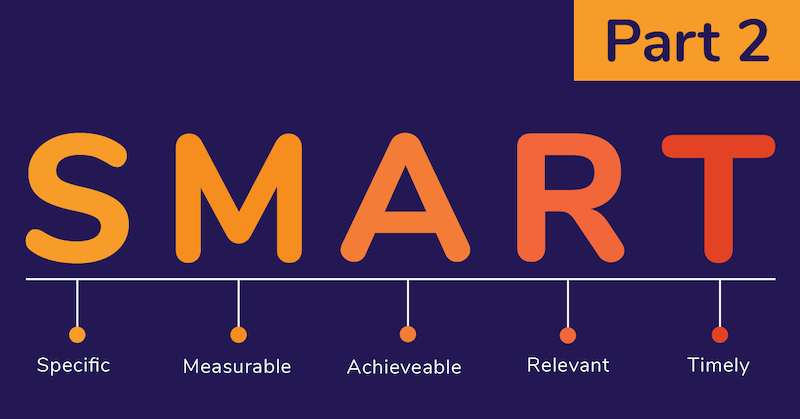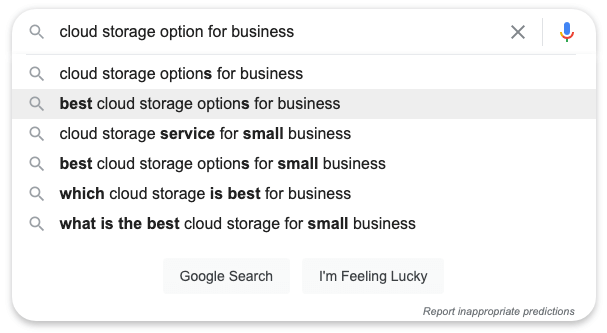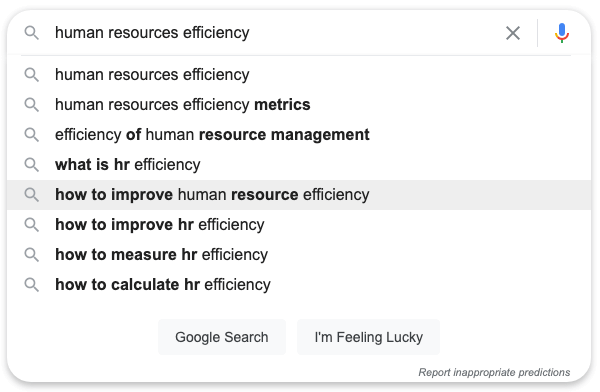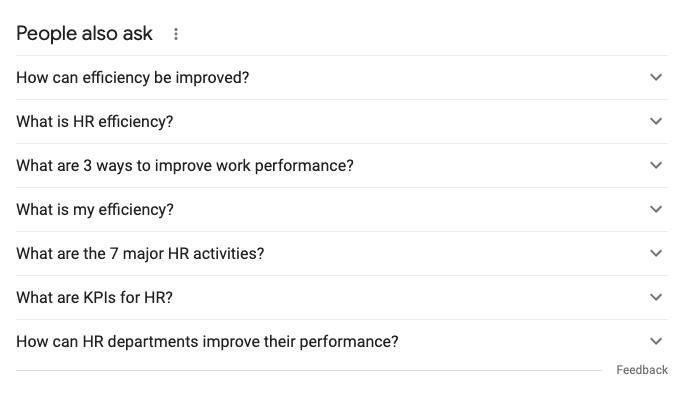How to Implement SMART Goals

Welcome to part two of our SMART goals series, How to Implement SMART goals. In part one, Fran crafted SMART goals for the SaaS business she works with called BCorp. In part two, Fran will take those goals and create a plan to implement them.
Before we get to implementing SMART goals, let’s review where Fran is at.
Fran started with a fuzzy goal of “get more leads.” Using the SMART method, Fran crafted a Specific, Measurable, Achievable, Relevant, and Timely goal. Read part one here if you want to learn more. After following the SMART method, the fuzzy goal of “get more leads” is now:
Grow the number of qualified leads for BCorp to 10 per week within 6 months from start date. We will do this by:
- Optimizing the SEO of our blog posts and pages with focus keywords within 6 weeks of launch.
- Creating 1 new piece of valuable content weekly for website publishing.
- Delivering targeted display, social, and search advertising to 20 corporate targets monthly.
- Gathering leads into a CRM for qualification and nurturing.
BCorp has a long sales cycle requiring many touchpoints. We will increase awareness of BCorp, engaging potential leads with valuable content, and positioning BCorp as an authority in the space. This will generate more leads. Then, our nurturing process will identify the quality leads, resulting in improved conversions.
Let’s implement SMART goals!
If you’re like Fran, you may feel relieved you have a goal, but overwhelmed by the seeming enormity of the project. The key to managing a large project with lots of moving parts is breaking it down. Fran will break her project goals into smaller and smaller parts until she can solve them. Once solved, Fran can put them back together as part of the larger solution.
Jump to a section
Optimizing SEO
Fran begins by taking the SEO part of her project and breaking down the steps to get the job done.
- Compile a list of all blog posts and pages.
- Add the list to a spreadsheet with five columns: name, URL, focus keyword, score, completed.
- Score the content from each page, then record the score.
- Tune the page or post and rescore until the score hits your goal.
Compile the list.
Compiling the list is simple and requires going through your site and recording the name of the page and the URL into your spreadsheet. Large sites might take a while to complete. Know that once you do this, you’ll perform the same tasks on pages and posts as they come online. Doing this upfront work only happens once.
Score the content.
I recommend using one of the many SEO tools available to help you score your content. They all work similarly. Here are some I’ve tried:
- Yoast SEO – https://www.yoast.com – Yoast makes an SEO plugin for sites running WordPress. It has been my experience that for WordPress you can’t go wrong with Yoast SEO.
- SEOReviewTools.com – This site offers several SEO tools to help you rank higher. You can choose to check any URL with their Website SEO Checker or use the Content Analysis tool to optimize SEO when you have text. If you’re writing from scratch, the Content Analysis Tool is perfect. If you’re tuning an existing website, try the Website SEO Checker.
To use the Content Analysis Tool:
- Click Start Writing
- Paste or type your text into the space provided
- Enter a focus keyword
- Enter your page title
- Enter your page description (Meta)
Scoring will start to happen automatically. Tune your page and follow the suggestions until your score is green.

Avoid using focus keywords more than once on your site. Stick with the long tail. Try to keep it short and unique.
The easiest way to do this is to use Google autocomplete.
Fran has a page about their cloud storage options for businesses. She also has a blog post about cloud storage options for businesses. Instead of using the same focus keyword, Fran headed over to Google and typed in cloud storage options for business. As she did, Google helped her define her keyword for her article by showing her subjects people had searched for. Fran chose best cloud storage option for business.

Use this method to help keep focus keywords unique and on target. This same method works well when generating content ideas, which we cover next.
How to create great content

Follow the 80/20 rule. 80% of your content must be consumer-focused. 20% of your content speaks about your brand, its products, and services.
Next up when learning how to implement SMART goals is content. Content creation tends to be one of the most difficult hurdles to any marketing plan. Writing articles, shooting videos, and creating infographics is tedious, time-consuming work. Fran must consider:
- What she seeks to achieve with the content.
- How oftent she will publish content.
- What form the content will take.
- How the content fits into the larger marketing strategy.
- How to measure results.
Fran answered some of these questions in her SMART goals. She must answer the remaining questions. She must also define what, who, and when for each content piece in a content calendar.
Last, but not least, Fran must consider the following:
- Content must provide value to the user.
- Don’t speak about yourself, your business, products, or services. Think about the user and what they want and craft something to attract them.
- Content must be SEO optimized.
- What’s your keyword strategy? What’s the focus keyword of the content you are crafting?
- Adapt content to work throughout the marketing funnel.
- At first, you must resolve doubts and overcome objections. Lower in the funnel you must provide guides, testimonials, and expert opinion.
- Content must be consistent.
- Create and adhere to a schedule. Be careful not to bite off more than you can handle.
- Play the long game.
- Sure, an article or video might go viral and create a big buzz. More likely, though, your content will build a base to attract users over the long haul. Set this expectation with management.
How to generate content ideas with Google autocomplete
To generate content, you need to have topics. Fran arrived at her topics by following a simple process. She began by learning more about current BCorp clients with questions to the client and the sales rep at BCorp. Try asking your clients and your team questions like these:
- Who are our best clients?
- Why are they are best clients?
- What questions do they ask?
- What do they care about?
- What do they struggle with?
- What problems do we solve for them?
If you think this looks like basic persona work, you’re right. If you already have personas in place, use them to help you generate content ideas. If not, get started using questions like the ones above.
Once you have some answers, fire up your Google autocomplet once more. This time, plug in the client answers to get suggestions. Suppose Fran’s company delivers solutions for human resources. Fran has learned that efficiency is a pain point for her clients. Her Google results might look like this:

If you want to go deeper, complete the search then click on “People also ask”. By opening each selection you’ll get more and more options. Fran performed the search for “how to improve human resource efficiency”. On the SERP (search engine results page) the “People also ask” section looked like this:

The Outline Method
Another method you can try is using outlines. Suppose you wish to create content for your food blog. Start with a topic, let’s say “how to grill a hamburger”. Make a quick outline of what you must do to grill a hamburger.
- Select the meat
- Prepare the meat
- Prepare the grill
- Grill the burger
- Dress the burger
- Eat the burger
Next, write up light content for each of the outlined points. Share a best practice and a few tidbits for each. Be careful not to go into too much detail – that’s where more content comes from. Now, dig into each part of the outline and go beyond the basics. Craft content that appeals to different users, but stays on the topic of “how to grill a hamburger”. Here are some examples:
- How to select the best (insert meat here) for your burger. You can generate a few articles from this point alone: beef, turkey, chicken, salmon, veggies…
- The best way to grill your burger with (gas, charcoal, blackstone, etc.)
- Top seasonings, rubs, marinades for burgers.
- Delicious custom burger condiments you must try.
Based on the example above, you could turn out a smorgasbord of burger content!
Publishing
You might think that once you craft that first article you should publish it right away. Seems logical, right? Think again.
One of the key elements of successful content marketing is consistency. If you publish that amazing new article right away, what’s next? Instead of publishing instantly, build up a month of content, then begin publishing. Release one a week, or two a week, being sure to have plenty of content “in the can” so you can remain consistent.
Cadence matters, too. If you’re going to publish new blog posts on Thursday, then post on Thursday. If company color pieces come out on Tuesdays, keep them on Tuesdays. Stay consistent and have recognizable cadence.
A content calendar can go a long way in helping you stay on top of what and when content is posting.
Paid Advertising
Fran knows that BCorp needs to raise awareness about her product. She also knows some target companies she’d like to win business from. It’s time for another technique to implement SMART goals – paid advertising.

Paid advertising is an art form. Done right, it can be a very effective way to drive business. Done wrong, it’s a money pit.
- Employees are expensive. Annual salary plus benefits, taxes, equipment, office space, training, time off.
- Agencies have more brain power. The likelihood of finding a unicorn who can “do it all” is very low. Agencies have staff across disciplines, coverage when people are out of office, and flexibility to fit your budget.
- Agencies are in the know. Agencies are full of people who nerd out on media. They know what’s hot and what’s not, spending their days staying on top of media trends. These media nerds can do it fast and efficient.
That doesn’t mean Fran’s work is done. She arms her agency partner with specific data such as:
- Ideal customer – who should the campaign target?
- Pain points – why should the campaign target them? What message should be used?
- KPIs – What is the goal of the campaign?
A good agency partner will ask for ideal customer, pain points, and KPI’s. These data points provide invaluable guidance to the agency as they plan.
Gather leads
Last, but not least, to implement SMART goals, Fran needs to gather the leads that are coming in and process them. Leads will generally come in through the corporate website or lead gen form on various platforms. How to process leads is beyond the scope of this article. What we are covering is what to look for in a CRM and the steps you must have to process the leads.
- Lead intake – Whenever possible, leads should enter your CRM automatically. If not, look for ways to automate the intake process as much as possible. Manual intake is ok, but keep in mind that it requires more time and effort.
- Lead sorting – Not all leads will be good. Count on some junk leads coming through. Be sure to remove them or flag them as such. Never waste your time with junk leads and get them out of the mix ASAP. Use or create lifecycle stages for leads and tie them to lead scoring.
- Lead scoring – You must have a way to score leads. Scoring leads allows your team to know where clients are in the funnel. Scoring means you know when to contact sales or when a lead needs more nurturing. Start somewhere with scoring, then adjust and fine-tune.
- Lead qualification – Use lifecycle stages and scoring to qualify the lead as very curious (Marketing Qualified Lead). Or qualify the lead as considering a sale (Sales Qualified Lead). Not every MQL becomes an SQL. Not every bit of interest makes a lead an MQL.
Using the steps above you can craft your own process and implement your SMART goals. Realize that everyone’s journey, like their goals, is different.


